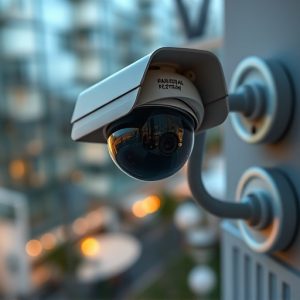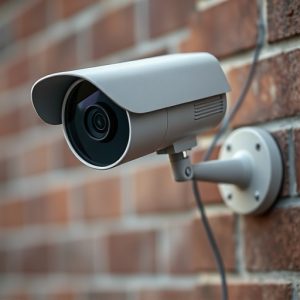Fake CCTV Cameras With Motion Detection: Benefits, Risks, and Legalities
Fake CCTV cameras with motion activation, disguised as genuine security equipment, offer psychologic…….
Fake CCTV cameras with motion activation, disguised as genuine security equipment, offer psychological deterrence but questionable effectiveness. While they simulate night vision and alert to movement, their lack of actual video capture limits their protective value. These cameras can be powerful deterrents in rural and urban settings, capturing clear images in low light, but may also cause false alarms and fail to detail complex environments. Their discrete yet powerful integration into various settings provides cost-effective peace of mind, yet raises legal and ethical concerns regarding individual privacy rights and fostering a culture of mistrust.
“Unveiling the mysteries of dummy cameras with infrared night vision, this article provides an in-depth look at these seemingly innocuous devices. We explore ‘Understanding Fake CCTV Cameras’ and their intricate features, particularly focusing on motion detection capabilities. Delving into the advantages and disadvantages of infrared technology, we weigh its impact. From various types to legal considerations, this comprehensive overview guides you through the landscape of fake cameras with motion detection, essential knowledge for anyone navigating surveillance technologies.”
- Understanding Fake CCTV Cameras: A Comprehensive Overview
- The Role of Motion Detection in Dummy Night Vision Cameras
- Advantages and Disadvantages of Using Infrared Technology
- Types of Fake Cameras: Features and Functionalities
- Legal and Ethical Considerations: Navigating the Use of Dummy Surveillance Devices
Understanding Fake CCTV Cameras: A Comprehensive Overview
Fake CCTV cameras, often disguised as genuine security equipment, have become a prevalent concern in today’s digital era. These “dummies” or replicas are designed to look like real surveillance cameras but lack the essential components for actual video capture and monitoring. Understanding the existence of such devices is crucial when considering home or business security. One common type is the motion-activated fake CCTV camera, which has gained popularity due to its seemingly advanced technology.
These dummy cameras with infrared night vision promise enhanced security by detecting movement and providing a visual deterrence to potential intruders. However, their effectiveness as a security measure is questionable. In terms of functionality, they may trigger alerts or record simulated video feeds, but they cannot capture clear or accurate images, making them more of a psychological barrier than a reliable security solution.
The Role of Motion Detection in Dummy Night Vision Cameras
Dummy cameras with infrared night vision have a unique advantage due to their integrated motion detection technology. This feature plays a pivotal role in making them highly effective security solutions, especially in low-light conditions or complete darkness. When activated, motion sensors in these fake CCTV cameras initiate automatic recording, ensuring that any movement within the camera’s range is captured instantly.
This real-time response is particularly useful for deterring potential intruders as it allows property owners to monitor their surroundings unobtrusively. The sensitivity of motion detection can be adjusted to suit different environments, making them versatile and adaptable to various security needs. Whether in a remote rural area or a bustling urban setting, these dummy cameras with motion detection provide peace of mind by capturing any unusual activity.
Advantages and Disadvantages of Using Infrared Technology
Infrared technology in dummy cameras, especially those designed for night vision and motion detection, offers several advantages. These include enhanced visibility in low-light conditions, making them ideal for security purposes. Fake CCTV Cameras With Motion that employ infrared capabilities can capture clear images even in complete darkness, ensuring round-the-clock surveillance. This feature is particularly beneficial in outdoor settings or areas with limited natural lighting. Additionally, infrared technology allows for silent operation, as it does not produce any visible light, thus providing a more discreet security solution.
However, there are also disadvantages to consider. One significant drawback is the potential for false alarms due to infrared sensitivity. Infrared sensors can be triggered by heat sources other than human or animal movement, such as vehicles or even changes in temperature. This may lead to unnecessary alerts and could reduce the overall effectiveness of the system if not properly calibrated. Moreover, while infrared provides excellent image quality, it might not always capture fine details, especially in complex environments with significant contrast changes, which can limit its effectiveness for certain security applications.
Types of Fake Cameras: Features and Functionalities
Fake CCTV cameras with motion detection are a popular choice for those looking to enhance security while maintaining privacy. These dummy cameras mimic real surveillance equipment, offering advanced functionalities such as infrared night vision, HD video quality, and responsive motion sensors. They are designed to blend seamlessly into various environments, from homes and offices to businesses and public spaces, providing a deterrent to potential intruders without the need for extensive wiring or professional installation.
These fake cameras often come with adjustable features like zoom capabilities, allowing users to capture detailed footage from a distance. Some models even incorporate wireless connectivity, enabling remote viewing through smartphone apps. The motion-activated triggers ensure that recordings are only captured when necessary, conserving storage space and preserving battery life. This technology makes them an effective and cost-efficient alternative to traditional CCTV systems, providing peace of mind without breaking the bank.
Legal and Ethical Considerations: Navigating the Use of Dummy Surveillance Devices
The use of dummy cameras, particularly those equipped with infrared night vision and motion detection, raises important legal and ethical questions. In many jurisdictions, the installation and operation of surveillance devices, even artificial ones, are subject to strict regulations designed to protect privacy rights. Using fake CCTV cameras can be a gray area; while they may serve as deterrents for real crimes, their presence could also infringe upon individual freedom and create a sense of constant monitoring.
Ethical considerations come into play when discussing the potential misuse of these devices. The mere presence of dummy cameras with infrared capabilities might encourage an environment of heightened paranoia and mistrust. It is crucial to balance security measures with respect for privacy, especially in public spaces. Additionally, the use of such devices should adhere to ethical guidelines that ensure transparency, obtain consent where applicable, and only employ surveillance as a last resort when other preventive methods have been exhausted.
Fake CCTV cameras with infrared night vision, or dummy cameras, offer a unique blend of functionality and deception. By leveraging motion detection and advanced infrared technology, these devices provide both security and privacy in equal measure. While they have legitimate uses for deterring crime and monitoring areas remotely, it’s crucial to navigate their deployment legally and ethically. Understanding the types of fake cameras available and their advantages and disadvantages is essential for making informed decisions in the ever-evolving landscape of surveillance technology.


